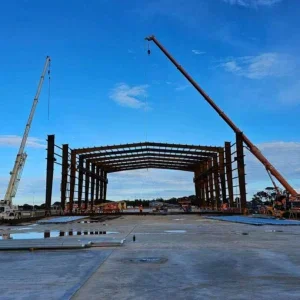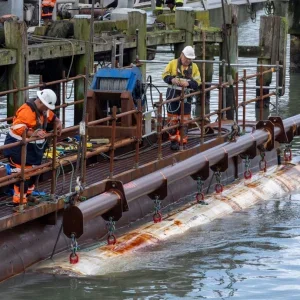Bids are due to be opened this month for Part Two of the Big Walnut Augmentation / Rickenbacker Interceptor (BWARI) project for the city of Columbus, Ohio in the US. The scheme includes approximately 4.8km of 3.65m diameter tunnel, five shafts and sewerage pipework.
The contract is part of the Clean Rivers Project, a series of sewer improvement schemes in the city which are funded by loans from the Ohio Environmental Protection Agency ÒWater Pollution Control Loan FundÓ programme. It will add extra flow capacity to a wastewater treatment plant, reducing sewage overflows into the Scioto River. The design is based upon ultimate predicted flows for when the area is fully developed, but during its early years of service the tunnel will provide storage capacity for the system during peak flows.
Part One of the project features 6.4km of 4.3m diameter tunnel, seven shafts, a short cut and cover section and shallow connections. Tendering took place from May last year and by July 2003 the contract was awarded to a joint venture of Jay Dee Contractors/Traylor Brothers/Michaels Corporation who submitted the low bid. The joint venture was issued with a notice to proceed in December 2003 and site preparation works got underway in January with tunnelling due to commence in September.
URS Corporation are lead designer on the project with support from Lachel & Associates for tunnel design and geotechnical work. HR Gray & Associates will provide support for administrating the project, including the bid documents, specifications and constructability review. A technical advisory committee has been formed from Òleading experts in the geotechnical aspects of tunnelling, TBM designÓ and other disciplines to support the project design team. The same arrangement will be used to provide construction management for the client for both sections.
Extensive site investigation work, including pump tests, has been carried out by the design team along the tunnel routes. The geology has been broadly identified as silty and clayey glacial till with glacial outwash deposits of sands, gravels, cobbles and boulders. The tunnel will be driven up to 21m below the water table and passes underneath Big Walnut Creek with only 6m of cover. To limit grout loss and resist buoyancy forces, a concrete slab will be placed on the creek bed.
The project documents call for either an EPB or slurry TBM, the Part One contractors have selected a Lovat EPBM for their works. A bolted concrete segmental lining will be installed concurrent with advance and after tunnelling is complete a system produced by Linabond Colining Systems will be used to provide corrosion resistance.







